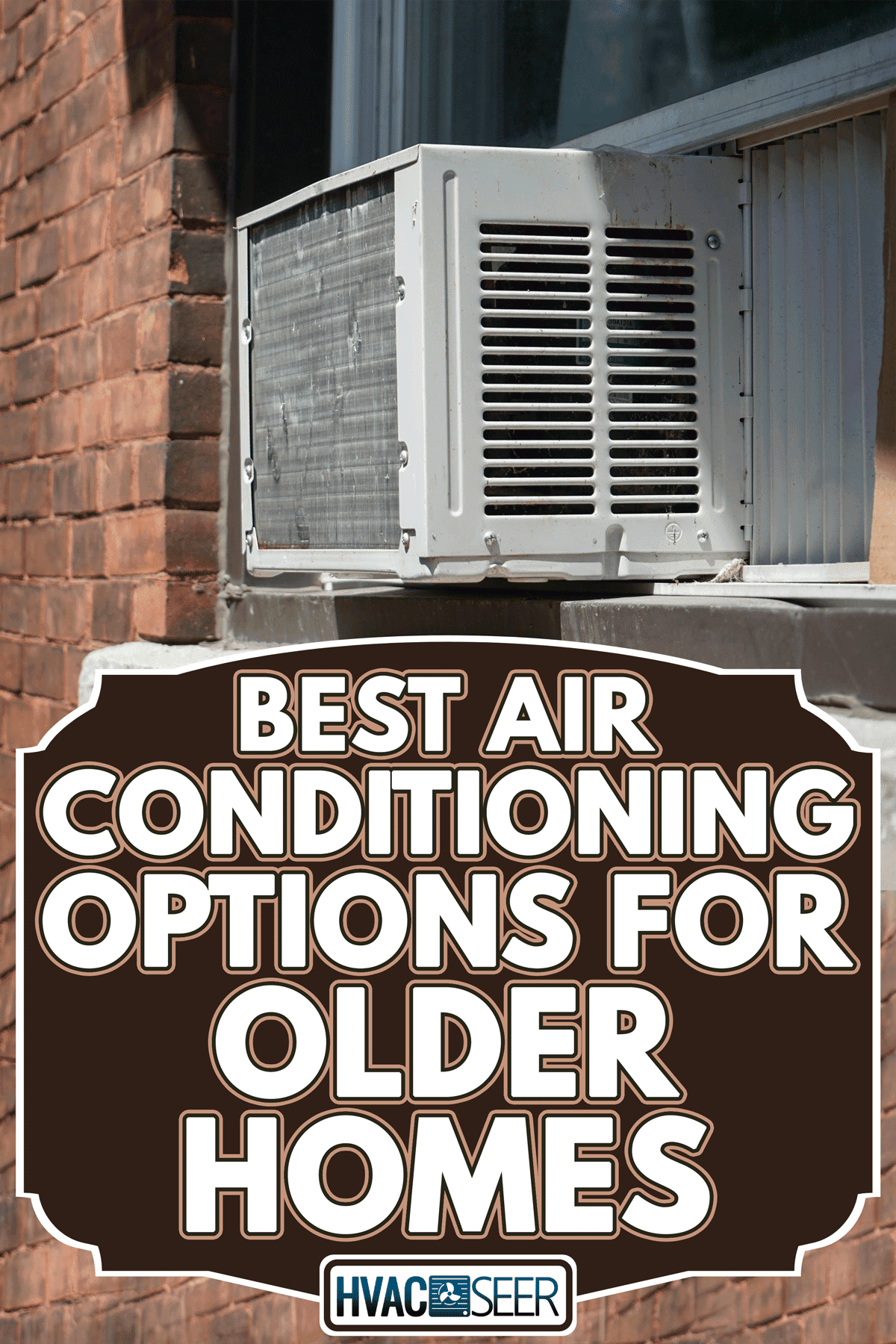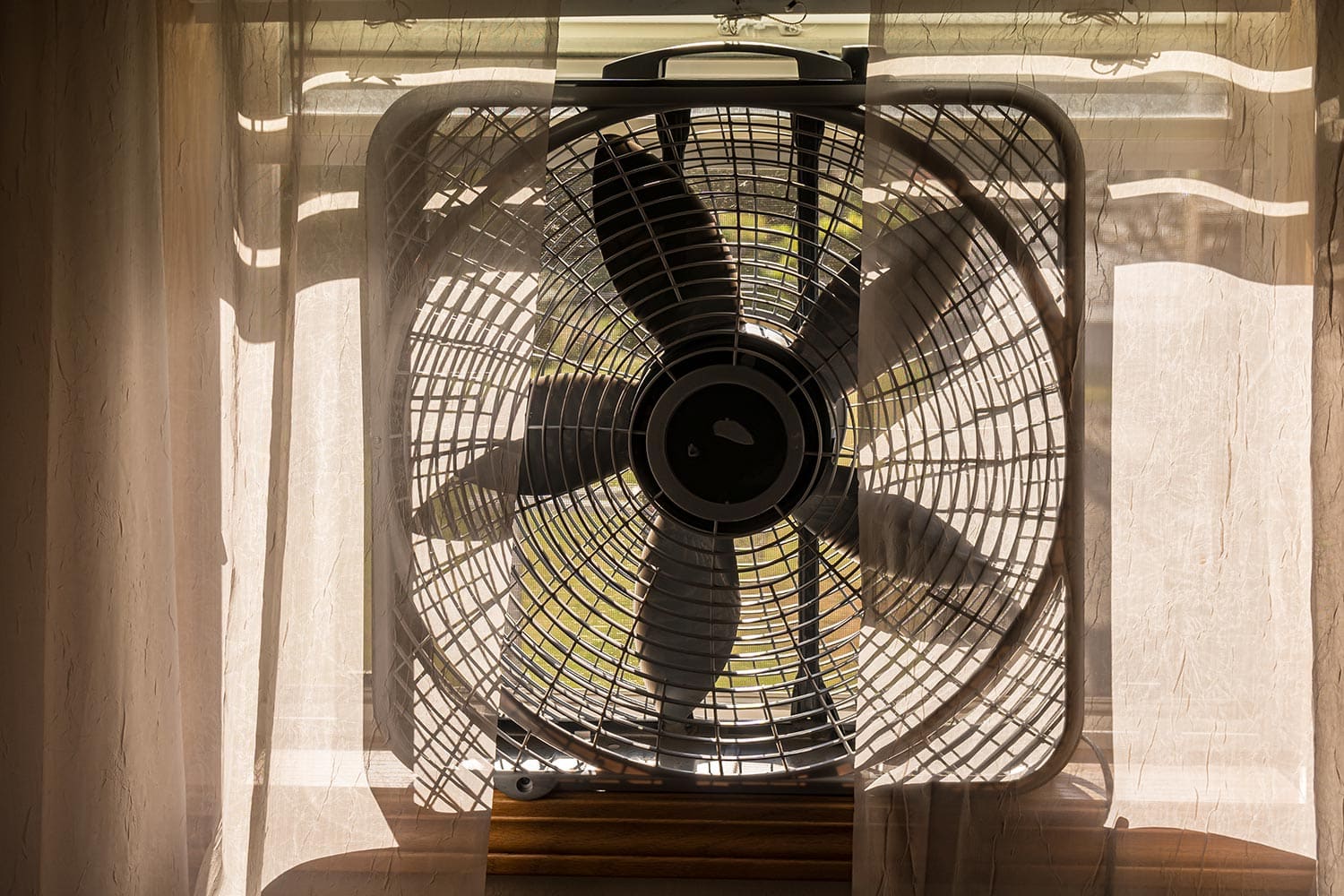By the 1940s only 1 in 400 homes had an air conditioner. So, if you have an older home, the chances are your home was not built with air conditioning in mind. If you're wondering what the best air conditioning options are for your home, you've come to the right place. We've researched the topic in-depth and have some suggestions for you!
The best air conditioning options for older homes are:
- Central air system
- VRF Systems
- Ductless mini-split airconditioning system
- High-velocity HVAC system
- Window units
Now you have some possible ideas about what air conditioning systems are best for your older home, but keep reading as we elaborate on each one. We'll cover some pros and cons and how much you can expect to pay for each system. We'll also answer some other questions you might have about cooling your home.

Cooling an Older Home: Best Air Conditioning Options
Air conditioning systems were not introduced to homes until the early 1930s. They were so expensive that many homes did not have air conditioning installed. Air conditioning systems became more popular and affordable in the 1950s after the war. So, if your home was built prior to this time, there's a possibility it does not have air conditioning. The good news is, you have some options.
Central Air System
Central air conditioning systems are the most common form of air conditioning in modern homes. The air is cooled at a central location and then dispersed through the home by ductwork and vents.
Cost
As you can imagine, this is one of the most efficient ways to cool a home. However, it can be difficult and pricey to install a central air system in an older home. You can expect to pay between $5000 to $10,000 depending on the size of your home. That being said, if you can afford it and installation is possible, this is the best way to cool a home. In addition, it can also help boost the value of your home.
VRF Systems
VRF stands for Variable Refrigerant Flow. It is a ductless system making it ideal for older homes that cannot be fitted with a central air system. Instead of ducts, a VRF system uses refrigerant lines to cool air. It's also easier to install and lighter weight than a central system. For those of you who are environmentally conscious, VRF systems have a smaller carbon footprint and are much more energy-efficient.
Cost
The estimated cost of a VRF system is $15 to $18 per sq. ft. served.
Ductless Mini Split AC System

Another ductless option is the Mini Split AC system. This system is highly energy-efficient and offers flexibility with where it can be placed in a room. If floor space is limited it can be mounted to the wall or ceiling instead. Mini Split systems have been known to cut a home's cooling costs by 50%.
Mini Split systems come with one main unit that is located outside the building and then smaller units placed throughout the home. More than one smaller unit can be added to a room if the room is large or just does not cool enough with one. A mini-split system also offers the ability to heat a room as well, so if your old house is also difficult to warm, this might be another reason to choose this option.
Cost
You can expect to pay anywhere from $2000 to upwards of $10,000 for this system depending on the size of the home that needs to be cooled. To get a better idea of cost, it would be wise to gather a number of quotes from local HVAC companies.
High-Velocity HVAC System
A high-velocity HVAC system works very similarly to a typical HVAC system, however, it is much less invasive which makes it ideal for older homes that aren't suited for a heavy-duty installation. It uses much smaller ducts and vents to move air throughout the home.
The vents are only about three to five inches in diameter whereas traditional vents are large, rectangular vents that can be up to 12 inches long. Because of their small nature, they are less distracting to the eye and can be made to appear less noticeable in your decor.
Cost
As for the cost of these systems, you can expect to pay a similar price to a traditional HVAC system. As always, prices may vary in your location, so don't be afraid to obtain quotes from various companies.
Window Units

Window units are probably the first thought that came to mind when thinking of ways to cool an older home. After all, they don't require you to tear down any walls or drywall in order to install them. If you're only trying to cool a small number of rooms, window units can be a cost-efficient choice.
One of the downsides to window units is their inability to cool a large room. They work best in a smaller space. Some other downsides are that window units are quite noisy, can compromise the security of your home, and can take away some of the natural light provided by your window. They can also be bulky and unattractive.
Cost
You can expect to pay $150 to $500 per window unit which is substantially cheaper than our other options. However, it is important to remember that this is just the price of a single unit which will only cool a small area. If you need a large area or a large number of rooms cooled, you will need more units which will make them less cost-efficient after a while.
How can I cool my old house?
We've given you a number of ways you can cool your old house with an AC system, but if you're in a time crunch or just don't have the money to commit to a whole new AC system, you may be wondering if you have any other options. Fortunately, there are a few methods you can try without the hefty price tag of a new AC unit.
Fans

While regular fans are not going to have the same cooling effect as an AC with coolant, just getting the air in the room moving can drastically cool an area down. Ceiling fans or box fans placed strategically around the room can help reduce the temperature. If the air outside isn't too warm, you can try placing a box fan in the open window to bring cooler air inside.
Click here to see Box Fan on Amazon.
Close and Cover Windows
If the sun is shining through your window, it can drastically increase the temperature in your room. You can insulate your windows by keeping them closed and covered. Blackout curtains work great for this. However, since their main job is to stop light from getting into the room, you will have to decide whether you are okay with blocking out the natural light in exchange for a cooler temperature.
If you don't like the thought of curtains, you should at least keep your blinds closed. This will also help keep out the heat but allow some of the natural light to still pass through into the room.
Click here to see Blackout Curtains on Amazon.
Reduce Oven Use

If you need another valid excuse not to cook, here's one! Using the oven to cook can cause the house to warm up even more. If you can, avoid using your oven as much as possible during the warmer months. Try taking the cooking outside with a grill instead!
Check for Insulation
If your house is not well insulated, you will find it hard to warm up in the winter and hard to keep cool in the summer. It may be worth checking whether your attic is adequately insulated. Sometimes, just adjusting the amount of insulation can make a drastic difference.
Final Thoughts
We've given you five air conditioning options for your older home. Hopefully, after reading this article, you feel more confident or, at the very least, you have a general idea of which option you'd like to try. All of the options come with various pros and cons and different price points. All of these should be considerations for you when deciding which system might be best for you.
If the AC options felt overwhelming, don't be afraid to try some of our other methods for cooling your home. Good luck!
For more reading on the topic of air conditioning, check out some of our blog posts below:


